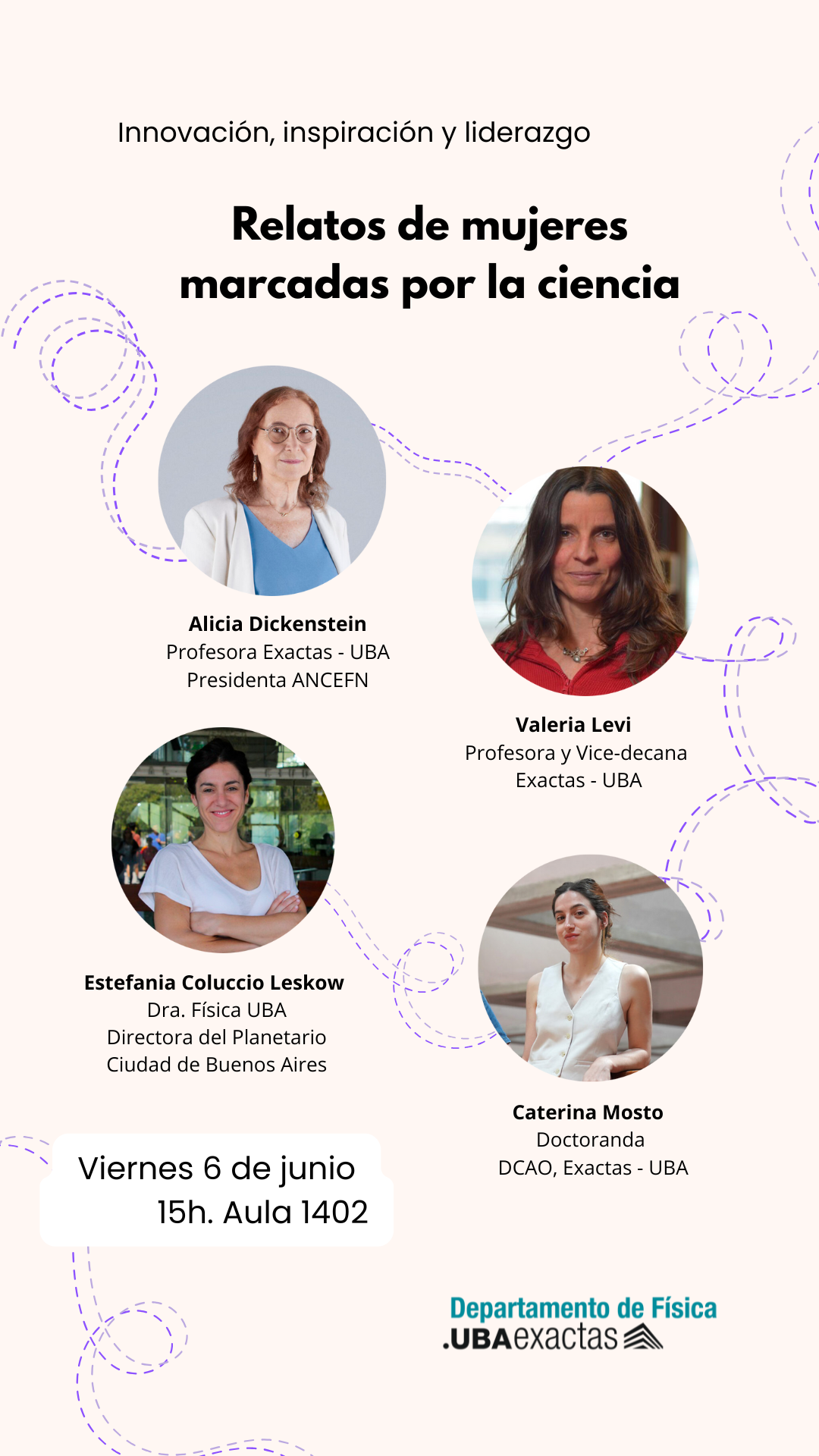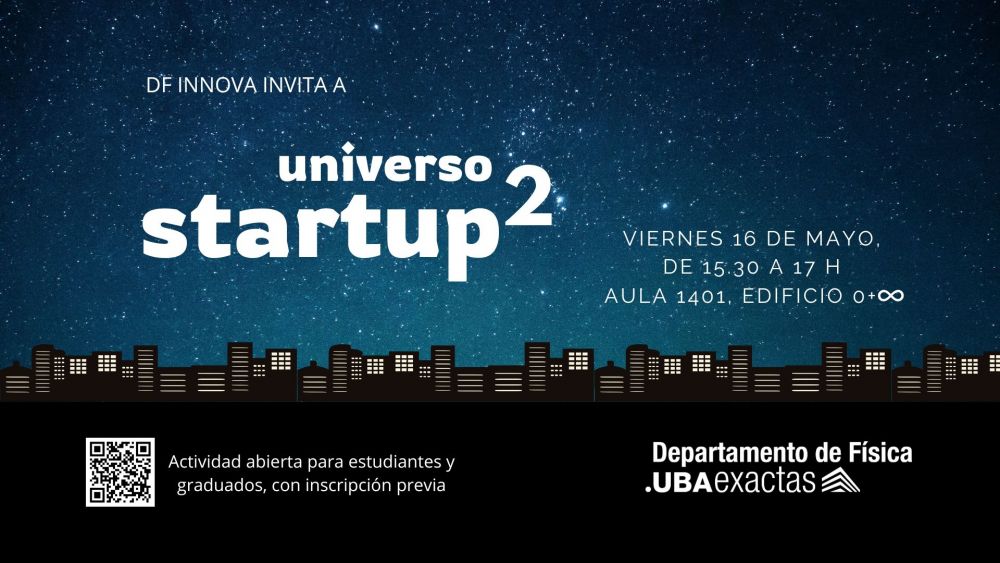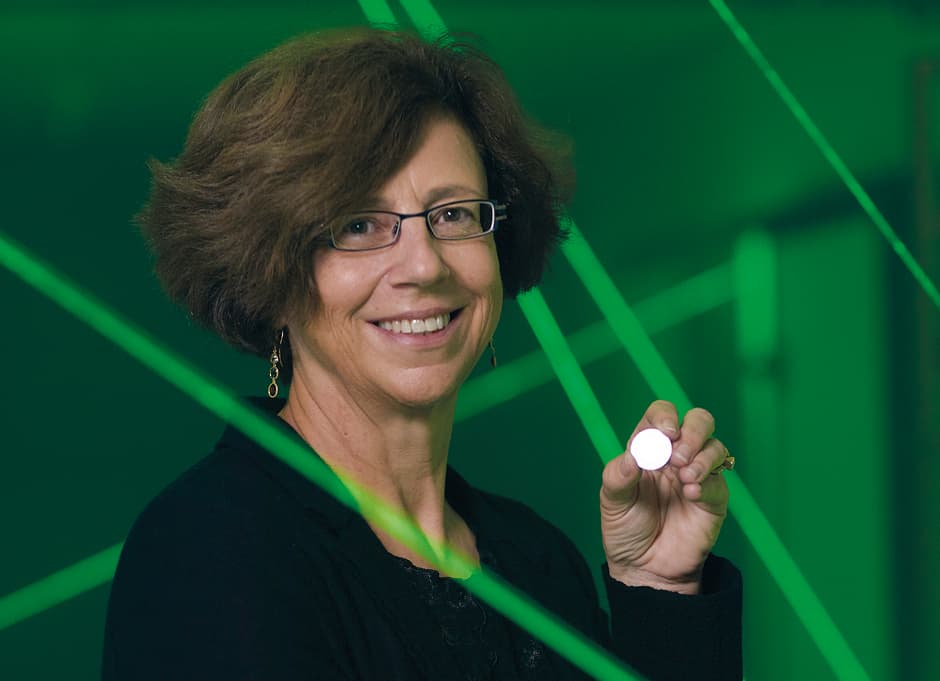Coloquio: El largo gracias
- 04-12-2025 14:00 |
- Aula Federman


Queremos invitarlos a Universo Startup, un espacio único donde convergen la física, las ideas y la innovación.
Esta actividad está especialmente dirigida a estudiantes avanzados de física así como a los doctorandos.
Es una buena oportunidad para inspirarte con historias reales de emprendimiento; conocer cómo la física impulsa ideas innovadoras en el mundo empresarial y para ampliar tu red de contactos con profesionales del sector.


El curso tiene como objetivo brindar los fundamentos y aplicaciones de microscopías avanzadas como microscopía de expansión (Expansion Microscopy), microscopía de tiempo de vida de fluorescencia (FLIM), microscopía de flujo mínimo de fotones (MINFLUX), y microscopía de depleción por emisión estimulada (STED). Las actividades prácticas propuestas tienen como objetivo introducir a los/as estudiantes en la preparación de muestras, configuración de los microscopios, la adquisición de imágenes para su posterior análisis. Las actividades prácticas de análisis de imágenes estarán enfocadas en introducir a los/as estudiantes en el procesamiento y análisis cuantitativo. En particular, se trabajará en la cuantificación de la resolución de las imágenes mediante distintas herramientas de análisis para evaluación cuantitativa.
Docente: Dra. Claire Brown (McGill University, Canadá), profesora invitada en el Departamento de Física
Duración: 6 semanas (42 horas).
Fecha: desde el 5 de mayo al 13 de junio.
Días y horarios: miércoles y viernes en el horario 11h a 13h (teoría).
Lugar: Aula 1114 / 1113, pabellón Cero+Infinito, para las clases teóricas.
Prácticas: Centro de Microscopía de Fluorescencia Gregorio Weber en la FCEN, en el CIBION (demostración de MINFLUX), y de manera remota se trabajará con los microscopios de la Facilidad Avanzada de BioImágenes (ABIF, McGill University, Montreal, Canadá) cuya directora es la Dra. Brown.
Formato: Clases teóricas, sesiones prácticas y discusiones interactivas.
Cohorte: 16 doctorandos y/o posdoctorandos (preferentemente, no excluyente) con conocimientos de microscopía confocal de barrido por láser (CLSM).
Puntos para doctorado (solicitado): 2
Inscripción: está abierta hasta el 5 de mayo.
Por el momento, la inscripción se realizará enviando un email a la dirección: Esta dirección de correo electrónico está siendo protegida contra los robots de spam. Necesita tener JavaScript habilitado para poder verlo.

Bootstrap or Venture Capital? Trade-offs in Building a Startup
Kurt J. Weingarten Tarkas Ventures. Zurich, Suiza
“Una charla abierta y sincera sobre lo que se necesita para crear, financiar y hacer crecer una empresa de base tecnológica sin desmayarse en el intento”.

Prof. Ursula Keller
Lunes 10 de marzo, 10 a 13 h. Aula 1401, Edificio Cero + Infinito.
Introduction to Mode Locking and Frequency Combs
These lectures will provide foundational knowledge based on Keller's textbook, *Ultrafast Lasers* (Springer Verlag)
• Basic principles and motivation: Modelocked lasers and their impact for many new discoveries
• Linear pulse propagation in time and frequency domain
• Active modelocking: Siegman-Haus theory
• Passive modelocking with and without dynamic gain saturation
• Passive modelocking: Fast saturable absorber
• Problems with self-starting, Q-switching, long open net-gain window, too much SPM
• Passive modelocking: Soliton modelocking
• Frequency comb and CEO phase stabilization CEO: carrier envelope offset phase
• New concepts: Dual-comb modelocking
Miércoles 12 de marzo, 10 a 13 h. Aula 1401, Edificio Cero + Infinito.
Attosecond Measurements and the Unresolved Question of Tunneling Time
A graduate-level introduction to ultrafast measurement techniques (e.g., pump-probe, streaking, etc.) followed by a detailed discussion on tunneling time measurements and their unresolved aspects.
• Time in Quantum Mechanics is challenging (more later with tunneling time)
• Motivation for THz to PHz Spectroscopy
• High Harmonic Generation (HHG) and attosecond pulses
• Attosecond Streak Camera
• RABBITT
• Conclusion and Outlook
Inscripciones hasta el 3 de marzo, aquí.